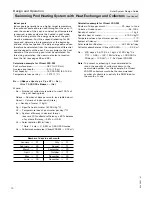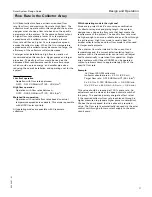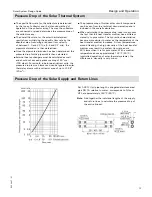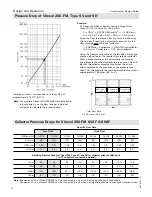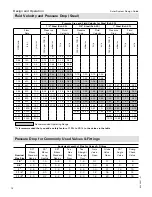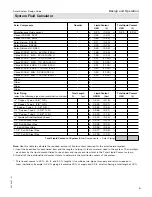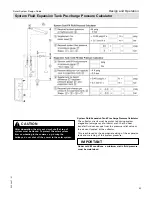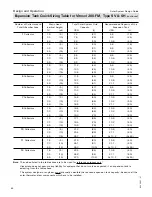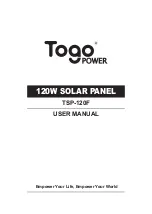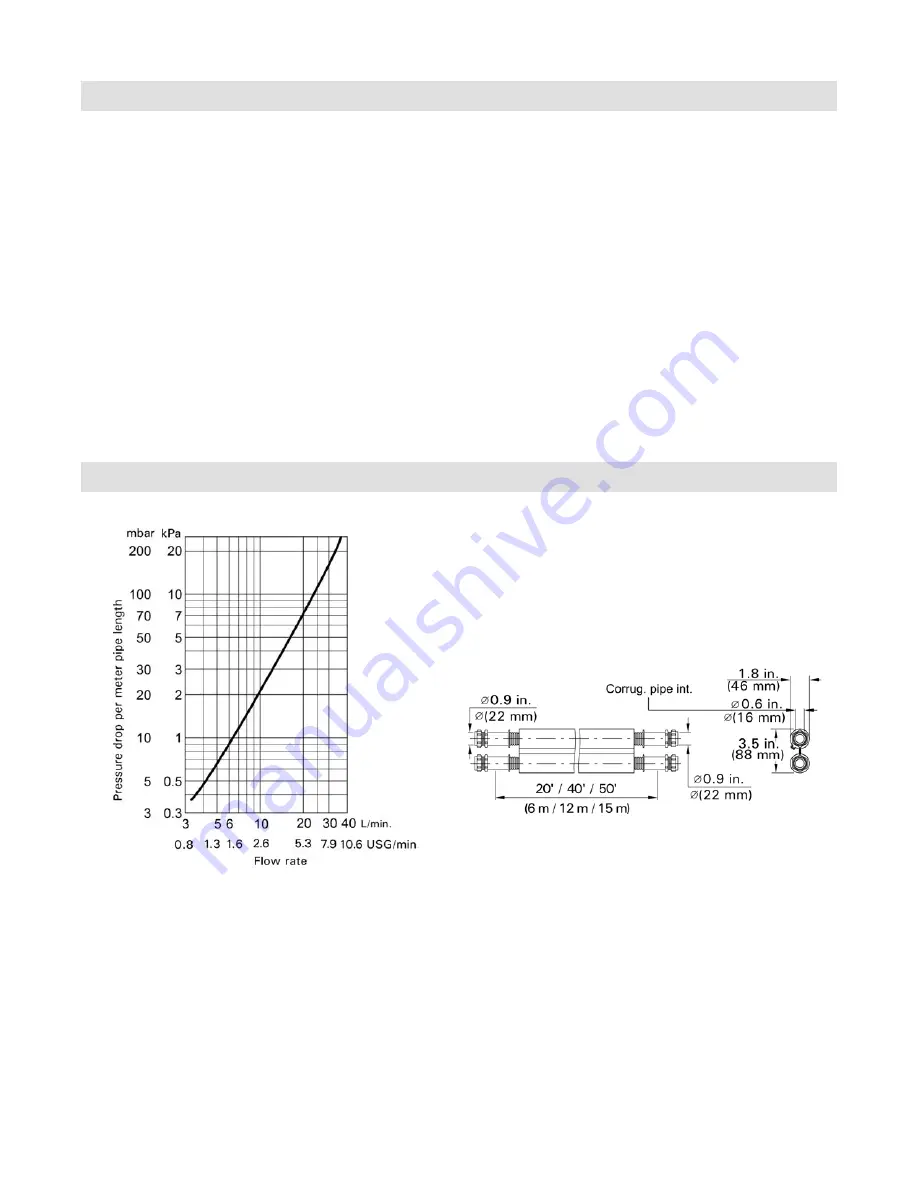
Solar System Design Guide
73
6020 457 - 01
Pressure Drop of the Solar Thermal System
■
The specific flow rate for the collectors is determined
by the type of collector and the intended method of
operation of the collector array. The way the collectors
are connected or piped determines the pressure drop of
the collector array.
■
The overall flow rate for the solar thermal system
results from multiplying the specific flow rate by the
absorber area. Assuming a required flow velocity
of between 1.3 and 2.3 ft/s (0.4 and 0.7 m/s), the
pipework dimension is then determined.
■
Once the pipework dimension has been determined, the
pressure drop for the pipework is then calculated.
■
External heat exchangers must be calculated as well
and should not exceed a pressure drop of 40”w.c.
(100 mbar). For smooth tube internal indirect coils, the
pressure drop is much lower and can be ignored in solar
thermal systems with a collector area of up to 215 ft
2
(20 m
2
).
■
The pressure drop of further solar circuit components
can be seen from the technical documentation and is
included in the overall calculation.
■
When calculating the pressure drop, take into account
the fact that the heat transfer medium has a different
viscosity to pure water. The hydraulic characteristics
become more similar to water as the temperature of the
heat transfer medium increases. At low temperatures
around freezing, the high viscosity of the heat transfer
medium may result in a system flow rate some
50% lower than it is for pure water. With a medium
temperature above approximately 122°F (50°C)
(controlled operation of solar thermal systems), the
difference in viscosity is only minor.
Pressure Drop of the Solar Supply and Return Lines
Per 3.28 ft (1m) pipe length, corrugated stainless steel
pipe DN 16, relative to water, corresponds to Tyfocor
HTL at approximately 140°F (60°C)
Note:
Add together the individual lengths of the supply
and return lines to calculate the pressure drop of
the entire line set.
Design and Operation












